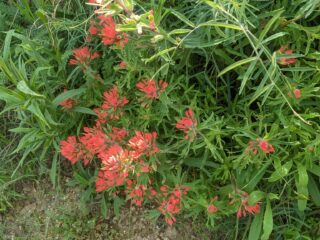
Just in time for the Spring Equinox, the ‘Slide-Rock Gap’ in the main trail has finally been solved. After months of grabbing ropes and dancing across the infamous ‘Khumbu Ladder’ bridge near Hoegee’s Drop-off, a safe tread has been reestablished on solid rock; more importantly, it’s safe even for the Adams pack train.
It was no small accomplishment: the gap in the trail meant the Camp was cut off from the Pack Station, preventing critical repair supplies from being delivered, stalling recovery and reopening work. The gap also meant Adams Pack Station was cut off from vital revenue from the Camp; with Chantry Flats closed, owner Maggie Moran’s business is entirely dependent on packing in the Canyon. So fixing the gap was THE high priority.
The challenge of the gap was three interlocking adjacent facets, all exposed over a sharp drop-off: first a steeply sloped rock ledge capped by an insidiously-well-rooted tree, then a slick-rock slope finally morphing into a deep chute.
Into the gap stepped (and crawled and scrambled) three trail-building pros: Nathan Bousfield, Fred Tanis, and Jim Richter. Over three days, the team effectively re-sculpted those facets down-and-over into a stable path. The amount of gritty, artful pounding with various sledgehammers and chisels plus levering with titanium prybars was staggering (and exhausting). And the tree presented an unexpected challenge—kind of like “Do we cut the red wire or the green wire?” to get the roots woven into the rock to release.
Our deepest thanks to these never-say-quit rockhounds, and to Maggie for housing them at Chantry: they camped out in her new storage shed and she kept them fueled for the job, as well as packing in tools and water on the burros. Thanks also to the Friends of the San Gabriels, who brokered the authorization to do the work with the USFS. With this key link in the trail restored, most of the remaining trail work will be more like annual spring cleaning—a lot of shoveling, raking and brush clearance. Check the volunteer link to participate.
And, anybody need a lightly used 15ft extension ladder?
New BSACPA President Elected
The Big Santa Anita Canyon Permitees Association is composed of dues-paying cabin owners, and at their recent annual meeting, they elected former Treasurer Jane Bice to the office of President. Closely involved with all the post-Bobcat fire work on behalf of the cabin owners, Jane takes up the mantle from Ben Fitzsimmons, who steps down with thanks from everyone for his service.
Jane promises an aggressive approach to post-fire issues and concerns with the USFS, as well as the on-going well-being of the canyon community. The work is sure to ramp up in anticipation of the canyon re-opening to the public (date unknown), so the Camp (technically Cabin #105) offers our support and best wishes to Jane in her new role.
Closed For Real
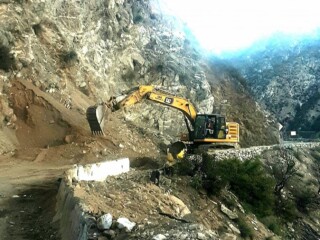
The Chantry Road is now fully closed to vehicle traffic for work on the bridge construction project. Chantry residents, cabin owners and Camp volunteers have parking space allocated below the work zone (about 3 miles up / ¼ mile short of Chantry Flats), and need to coordinate with the contractor’s work schedule for walking access through the project. Chantry resident Dave Nickloff is posting photos of the project almost daily to his Facebook page, which show up on Wilbur Sturtevant’s page—check it out for the latest.
A Financial Ecosystem Too
Sturtevant Camp lives in a wilderness ecosystem of water, trees, moving rocks and soils, plus bears, termites, newts and mousies, It also functions in a constructed ecosystem of heated buildings, pipes, propane and electricity. (Note that “eco-” means “home”, both the where and the way living is carried out). The Board is always working for the Camp to operate in balance with its ecosystems, a home away from home in the forest.
The other key ecosystem is financial: how are we keeping the balance there? Looking back over the history of the Camp, the income/expense reports and balance sheets are quite stable. This is a reflection of the basically finite fiscal ecosystem of the Camp: with just 40 beds, rustic accommodations, operating only weekends, an average of 50 weeks a year, the possible range of guest income has always been narrow.
Basic expenses are very predictable: it’s all about the utilities (water system, propane, gas, trash) and packing packing packing. Like most camps nationally, tight budgets have always meant patchwork repairs and deferred maintenance, and we have plenty of both! But this is exacerbated by being isolated in the wilderness, where the trail is a serious bottleneck not only to repair materials but to the volunteers doing the work: often volunteers spend as much time on the road and trail getting to/from Camp as they do on site fixing/maintaining stuff.
The big fiscal inflection points in the recent past have been the ca.2005 Chantry Road closure, and now of course the Bobcat fire—compounded by the current road closure for most of 2022. But the deepest impact over the last 30 years has been the decline in summer residential youth camping, which was the previous mainstay of annual income. Now the business has shifted to families and small groups of friends. The future is wide open, but we still have to address the loss of Cabin-1 which provided 20% of our bed capacity.
Reclaiming that capacity will require the kind of capital expense that used to be covered by the Camp’s institutional ownership. But since 2014 the Camp has been a stand-alone and distinctly non-profit business! Except we’re not financially alone: especially following the Bobcat Fire, we’ve experienced broad support through direct gifts of all kinds and sizes. In fact, most non-profit businesses now practice a multi-revenue stream approach to budgeting, so that the mission of the Camp is not dependent on any one source of revenue.
Preparing to re-open to the public means conserving our place in the wilderness ecosystem, repairing and improving our functional ecosystem of buildings and utilities, and strengthening our financial ecosystem. That will include an updated reservations and accounting system, and developing a coordinated approach to fund-raising, grant applications, and contributions of goods and skills in kind. With your involvement, we look forward to healthy future in each of our ecosystems. Thank you for all you have done and will do!
http://www.sturtevantcamp.com/support/
Binocular Report
 The timing of this month’s trail fix for packing plus the road project moving forward rapidly means now the clock is ticking for delivery of cement for the water tank project. Although the Camp remains closed for business, we’re still busy with this and other repair and improvement projects: funding these projects is entirely dependent on charitable donations of time, talents and dollars. You can help with any or all of these! Click into the Volunteer and Donate links, and keep in touch here as we move toward summer.
The timing of this month’s trail fix for packing plus the road project moving forward rapidly means now the clock is ticking for delivery of cement for the water tank project. Although the Camp remains closed for business, we’re still busy with this and other repair and improvement projects: funding these projects is entirely dependent on charitable donations of time, talents and dollars. You can help with any or all of these! Click into the Volunteer and Donate links, and keep in touch here as we move toward summer.
Next Month’s Blog:
Moving Mountains — a Hydrologist’s Prediction
Photo Gallery
Photos of the washed out stock trail and recent repair work.
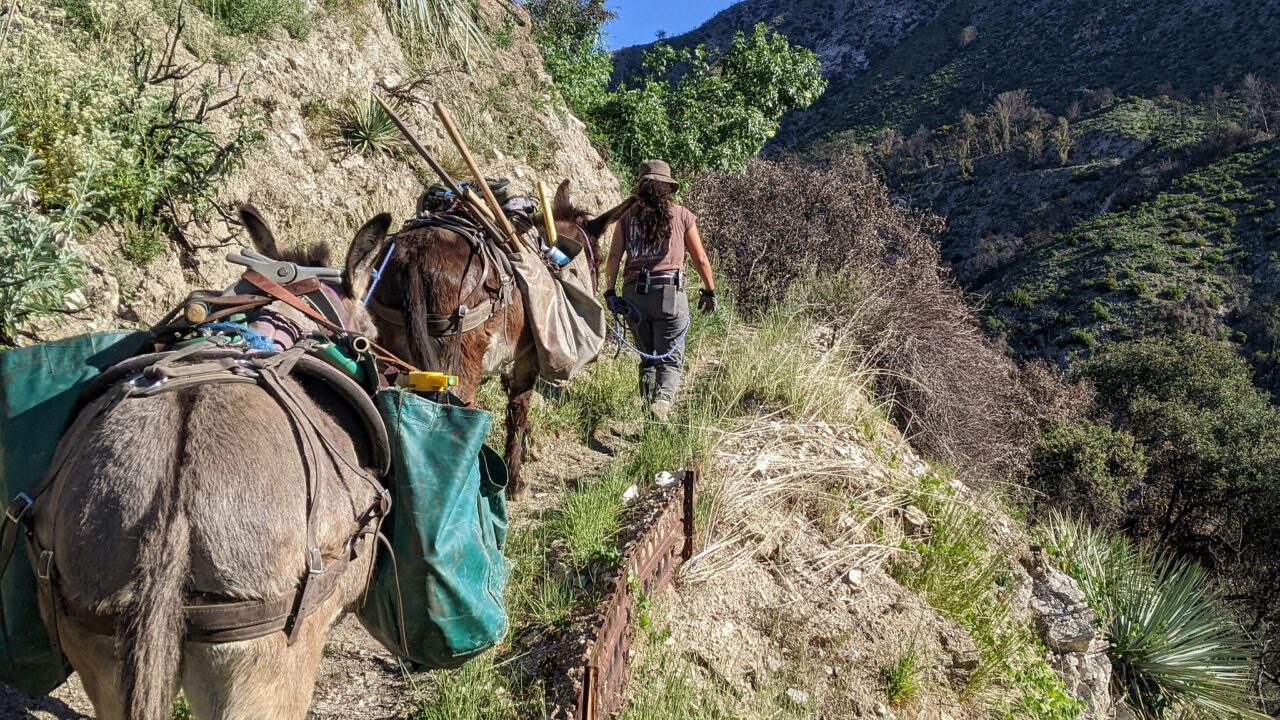
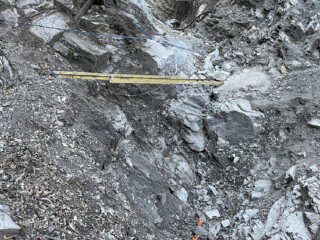
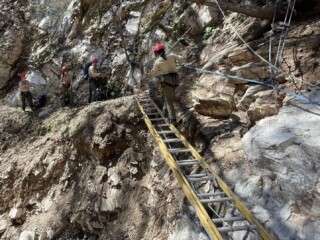
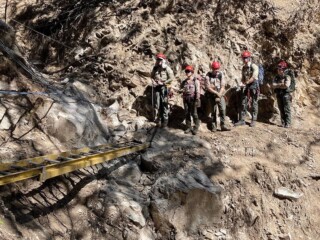
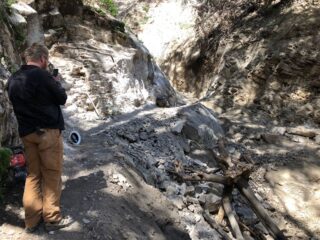
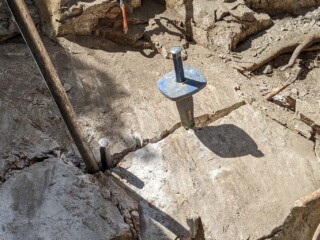
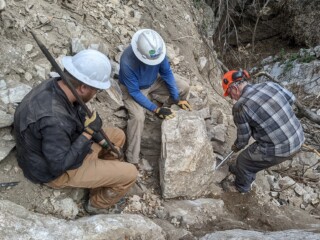
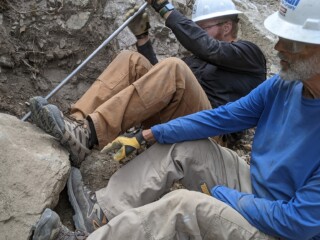
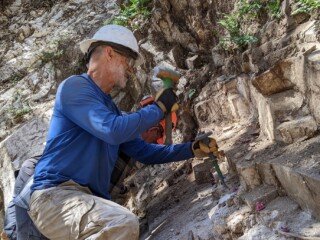
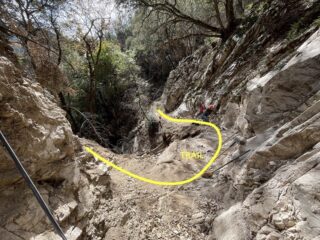
5 replies on “The Ladder Is Gone, Burros Are Coming”
Amazing work, guys and gals! Where would we be without you?
Wow! That looks fantastic! Thank you for all your hard work!
Great work, many thanks from this lover of the big cyn.
I grew up in Sierra Madre and Arcadia in the 1950s and going up to Chantry Flats for picnics and hikes and girl scout activities is a beloved memory. Thank you for the work you do.
Keep up the good work! I would gladly pay a fee for access when it is all ready to go. Might help with all the costs of restoring the area.